Plecos are a popular type of freshwater fish that are often kept in home aquariums. They are known for their unique appearance and their ability to help keep tanks clean by eating algae.
However, many people are unsure of what to feed plecos to keep them healthy and happy.
Understanding Plecos’ dietary habits is important in ensuring their well-being. While they are primarily herbivores, they also require some protein in their diet. Feeding them a varied diet that includes both vegetables and protein sources is key to keeping them healthy.
Vegetables are an important part of a pleco’s diet. They can be fed a variety of vegetables such as zucchini, cucumber, and spinach. Fruits can also be offered in moderation.
Protein sources such as shrimp, bloodworms, and pellets can be given to plecos as well. Special Feeding Considerations should also be kept in mind, such as avoiding overfeeding and providing adequate hiding places for plecos to eat in peace.
Contents
Key Takeaways on What to Feed Pleco
- Plecos are primarily herbivores but require some protein in their diet.
- A varied diet that includes vegetables and protein sources is important for plecos’ health.
- Special feeding considerations such as avoiding overfeeding and providing hiding places should be kept in mind.
Don’t miss out on our other popular posts on your aquatic buddies’ dietary needs:
Understanding Plecos
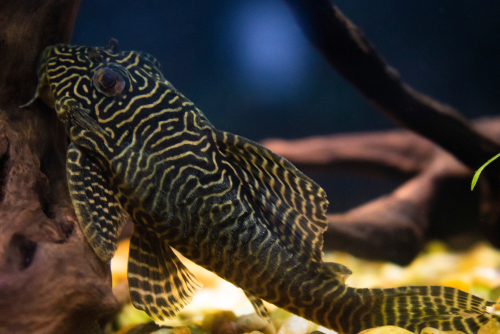
Plecos, also known as plecostomus or pleco catfish, are a diverse group of freshwater fish that belong to the Loricariidae family.
There are over 150 species of plecos, each with unique characteristics, behaviors, and dietary requirements.
Some of the most common pleco species include the common pleco, bristlenose pleco, clown pleco, zebra pleco, royal pleco, and sailfin pleco.
Plecos vary in size, color, and behavior. They are nocturnal fish that prefer to hide in caves or other hiding spots during the day and come out at night to feed. In captivity, plecos require large aquarium tanks with good water quality and plenty of hiding spots.
When it comes to feeding plecos, it is important to understand their dietary requirements. Plecos are omnivores that require a balanced diet of both plant and animal matter.
They have specialized teeth that allow them to scrape algae off of surfaces, making them excellent algae eaters. However, plecos also require other sources of food such as pellets, vegetables, and protein-rich foods like shrimp or bloodworms.
Plecos’ Dietary Habits
Plecos are known for their dietary habits as they are primarily herbivorous and feed on algae.
However, they are also known to be omnivores and carnivorous plecos can be found in the wild. Therefore, it is important to provide them with a varied diet that meets their dietary needs.
A balanced diet for plecos should consist of both plant and animal-based foods. Algae should make up a significant portion of their diet as it is a major source of fiber and other essential nutrients.
Plecos can also be fed vegetables such as zucchini, cucumber, and spinach, which provide additional fiber and vitamins.
Protein is also an important component of a pleco’s diet. They can be fed high-quality fish food pellets, shrimp, and other small aquatic animals. However, it is important to avoid overfeeding protein-rich foods as it can lead to digestive issues.
A feeding schedule for plecos should be established to ensure they receive a balanced diet. It is recommended to feed them once or twice a day, depending on their size and age.
Overfeeding should be avoided as it can lead to obesity and other health issues.
Vegetable Diet for Plecos
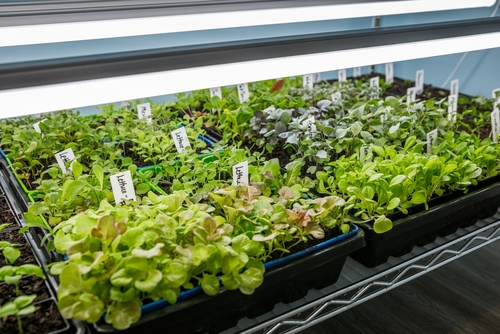
Plecos are known for their love for vegetable-based diets. Vegetables provide essential nutrients, fiber, and roughage that are vital for their digestive system. Here are some vegetables that you can feed your pleco:
- Zucchini: This vegetable is a favorite among plecos. It’s low in calories and high in nutrients, making it a great addition to their diet. Cut it into small pieces and feed it raw or boiled.
- Peas: Shelled peas are an excellent source of fiber and protein for plecos. They also contain vitamins and minerals that are essential for their overall health. You can feed them frozen or fresh peas.
- Cucumber: Cucumbers are another vegetable that plecos love. They are low in calories and high in water content, making them a great choice for hydration. Cut them into thin slices and feed them raw.
- Lettuce: Plecos can also eat lettuce, but it’s important to choose the right type. Romaine lettuce is the best option as it’s low in oxalic acid, which can be harmful to plecos. Feed them small pieces of lettuce leaves.
- Broccoli: Broccoli is a nutritious vegetable that plecos can eat in moderation. It’s high in fiber and vitamin C, but it also contains goitrogens, which can interfere with their thyroid function. Feed them small pieces of broccoli florets.
- Lima beans: Lima beans are a good source of protein and fiber for plecos. They also contain essential vitamins and minerals. Cook them and feed them in small quantities.
- Spinach: Spinach is another vegetable that plecos can eat in moderation. It’s high in iron and other essential nutrients, but it also contains oxalic acid, which can be harmful in large quantities. Feed them small pieces of spinach leaves.
- Carrots: Carrots are a good source of vitamin A and fiber for plecos. They also contain other essential vitamins and minerals. Cut them into small pieces and feed them raw or boiled.
- Kale: Kale is a nutritious vegetable that plecos can eat in moderation. It’s high in fiber, vitamin C, and other essential nutrients. Feed them small pieces of kale leaves.
- Cabbage: Cabbage is another vegetable that plecos can eat in moderation. It’s high in fiber and other essential nutrients, but it also contains goitrogens, which can interfere with their thyroid function. Feed them small pieces of cabbage leaves.
- Celery: Celery is a low-calorie vegetable that plecos can eat in moderation. It’s high in fiber and other essential nutrients. Cut it into small pieces and feed it raw or boiled.
- Fresh vegetables: You can also feed your pleco a variety of other fresh vegetables, such as sweet potato, green beans, and bell peppers. Make sure to cut them into small pieces and feed them in moderation.
Fruit Diet for Plecos

Plecos are herbivorous fish that require a balanced diet consisting of vegetables, fruits, and algae. While vegetables and algae are the main components of their diet, fruits can also be a tasty and nutritious addition to their meals.
One fruit that is great for plecos is cantaloupe. Cantaloupe is a good source of vitamins A and C, as well as potassium. It is also low in fat and calories, making it a healthy snack for your pleco.
To feed your pleco cantaloupe, simply cut it into small pieces and drop it into the tank. Make sure to remove any uneaten pieces after a few hours to prevent them from fouling the water.
Another fruit that plecos enjoy is honeydew melon. Honeydew melon is rich in vitamin C and potassium, and is a good source of dietary fiber. To feed your pleco honeydew melon, cut it into small pieces and drop it into the tank. Again, remove any uneaten pieces after a few hours.
Papaya is another fruit that can be included in a pleco’s diet. Papaya is a rich source of vitamin C, folate, and potassium. It also contains an enzyme called papain, which can aid in digestion.
To feed your pleco papaya, cut it into small pieces and drop it into the tank. As always, remove any uneaten pieces after a few hours.
Protein Diet for Plecos
Plecos are omnivorous fish that require a balanced diet to stay healthy and thrive. While they primarily feed on algae, they also need protein in their diet to maintain their growth and overall health. In this section, we’ll discuss some of the best protein sources for plecos.
1. Meat
Meat is an excellent source of protein for plecos. You can feed them lean cuts of beef, chicken, or turkey. However, it’s essential to ensure that the meat is cooked thoroughly and free of any spices or seasoning.
Feeding raw meat to plecos can lead to bacterial infections and other health issues.
2. Shrimp
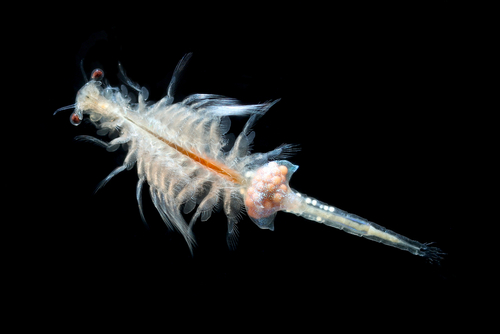
Shrimp is another excellent source of protein for plecos. You can feed them fresh or frozen shrimp, either cooked or uncooked.
However, it’s crucial to remove the shell and tail before feeding them to your plecos. Shrimp shells can be difficult for plecos to digest and can cause digestive issues.
3. Bloodworms
Bloodworms are a popular protein source for plecos. They are high in protein and easy to digest, making them an ideal food for plecos.
You can feed them live or frozen bloodworms, but it’s essential to ensure that they are free of any parasites or diseases.
4. Worms
Worms are another great source of protein for plecos. You can feed them earthworms, mealworms, or waxworms.
However, it’s crucial to ensure that the worms are free of any pesticides or chemicals. You can also breed your own worms to ensure that they are safe for your plecos.
5. Seafood
Seafood is an excellent source of protein for plecos. You can feed them fresh or frozen seafood such as shrimp, crab, or fish.
However, it’s essential to ensure that the seafood is free of any bones or scales that can cause digestive issues.
Special Feeding Considerations
When it comes to feeding plecos, there are some special considerations that should be taken into account.
One of the most important things to consider is their need for wood or driftwood in their diet. This is because plecos are natural wood eaters and need the roughage to help with digestion.
In addition to wood, plecos can also be fed pellets, sinking pellets, and algae wafers. Hikari Tropical Algae Wafers and Omega One Veggie Rounds are both good options for plecos.
It is important to note that plecos should not be fed exclusively on fish food, as this can lead to health problems.
When feeding plecos, it is also important to consider their age and size. Juvenile plecos have different dietary needs than adult plecos, and beginners should be aware of this when selecting food.
It is also important to be aware of the territorial nature of plecos and to make sure that they are not competing with other fish for food.
Finally, it is important to consider the impact of plecos on the ecosystem. Overfeeding can lead to an overgrowth of algae, which can have negative effects on the immune system of other fish in the tank.
Therefore, it is important to feed plecos in moderation and to keep their environment clean.
Frequently Asked Questions
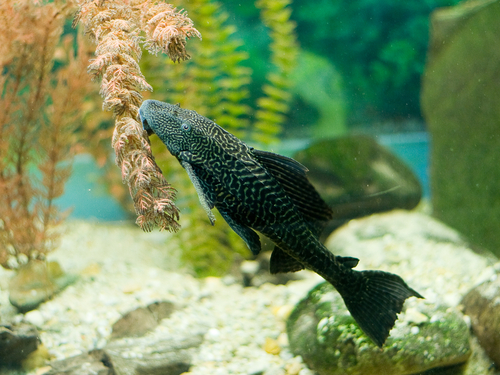
What vegetables are safe for plecos to eat?
Plecos are herbivorous fish and can eat a variety of vegetables. Some of the safe vegetables for plecos to eat include zucchini, cucumber, lettuce, spinach, kale, and broccoli.
It is important to blanch or boil the vegetables before feeding them to the pleco to make them easier to digest.
What is the best food for a pleco?
The best food for a pleco is a balanced diet that includes both vegetables and protein. Commercially available pleco pellets or wafers are a good option as they contain all the necessary nutrients.
It is also recommended to supplement their diet with fresh vegetables such as zucchini, cucumber, and spinach.
How do I make homemade food for my pleco?
Homemade food for plecos can be made by mixing vegetables such as zucchini, cucumber, and spinach with protein sources such as shrimp or fish.
The mixture can be blended together and formed into small balls or cubes. It is important to ensure that the homemade food is balanced and provides all the necessary nutrients.
Can plecos eat fruit?
Plecos are primarily herbivorous and do not require fruit in their diet. However, they can eat small amounts of fruit such as watermelon or cantaloupe as a treat.
What should be included in a pleco’s tank?
A pleco’s tank should include hiding places such as caves or driftwood, as well as plants for them to graze on. The tank should also have a good filtration system and regular water changes to maintain water quality.
Do plecos eat fish flakes or pellets?
Plecos can eat fish flakes or pellets, but it is important to ensure that the food is specifically formulated for plecos and contains all the necessary nutrients. It is also recommended to supplement their diet with fresh vegetables.
What Do Plecos Eat in the Wild?
In their natural habitats, plecos thrive on a varied diet that includes algae, plant matter, and small invertebrates. Algae serve as a staple food source, while plant matter supplements their nutritional needs. Plecos in the wild also feed on small insects and crustaceans, ensuring they receive a diverse range of nutrients and fiber necessary for their overall well-being.
What Do Plecos Eat in Captivity?
When kept in an aquarium, plecos still require a diet that replicates their natural eating habits. High-quality sinking pellets specially formulated for herbivorous fish serve as a staple food source, effectively imitating their natural diet and providing the essential nutrients they need to stay healthy.
Do Plecos Eat Fish?
Unlike predatory species, plecos are generally peaceful and do not exhibit predatory behaviors towards other fish. Their preference is towards consuming algae and plants. However, plecos can nibble on the slime coat of slow-moving fish or even consume fish eggs, though this behavior is not common.
What Fruit Can Plecos Eat?
While plecos can consume fruits like melon, apple, and banana, it is important to offer them in moderation due to their higher sugar content. Fruits should be seen as occasional treats rather than a regular part of their diet.
Final Thoughts
In conclusion, it is vital to provide a well-balanced and varied diet for the overall health and thriving of plecos. By monitoring their eating habits and adjusting their diet accordingly, you can ensure they receive the necessary nutrition.

Remember to offer high-quality sinking pellets, incorporate fresh vegetables, and occasionally provide treats like fruit. Meeting their dietary needs will enable your pleco not only maintain a clean aquarium but also showcase its unique charm for many years to come.
Remember, a well-fed pleco is a happy and healthy pleco. Catering to their nutritional needs will result in vibrant health and a captivating presence in your aquatic world.
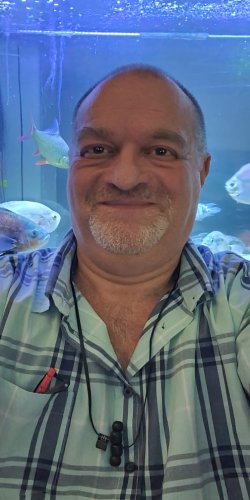
Veteran fish keeper and keen hobbyist with a serious case of MTS. My midlife crisis was the establishment of a fish room, much to my wife’s horror. Little does she know it could be worse!!


